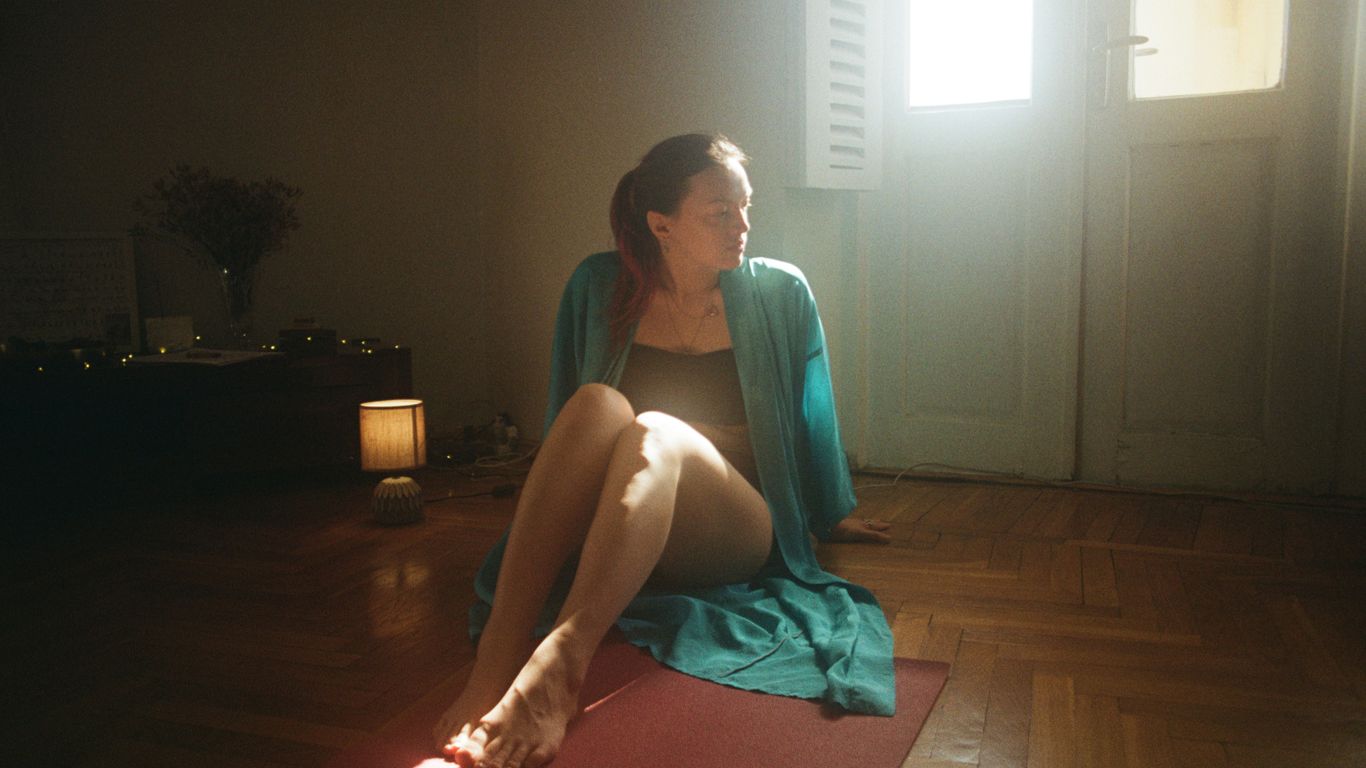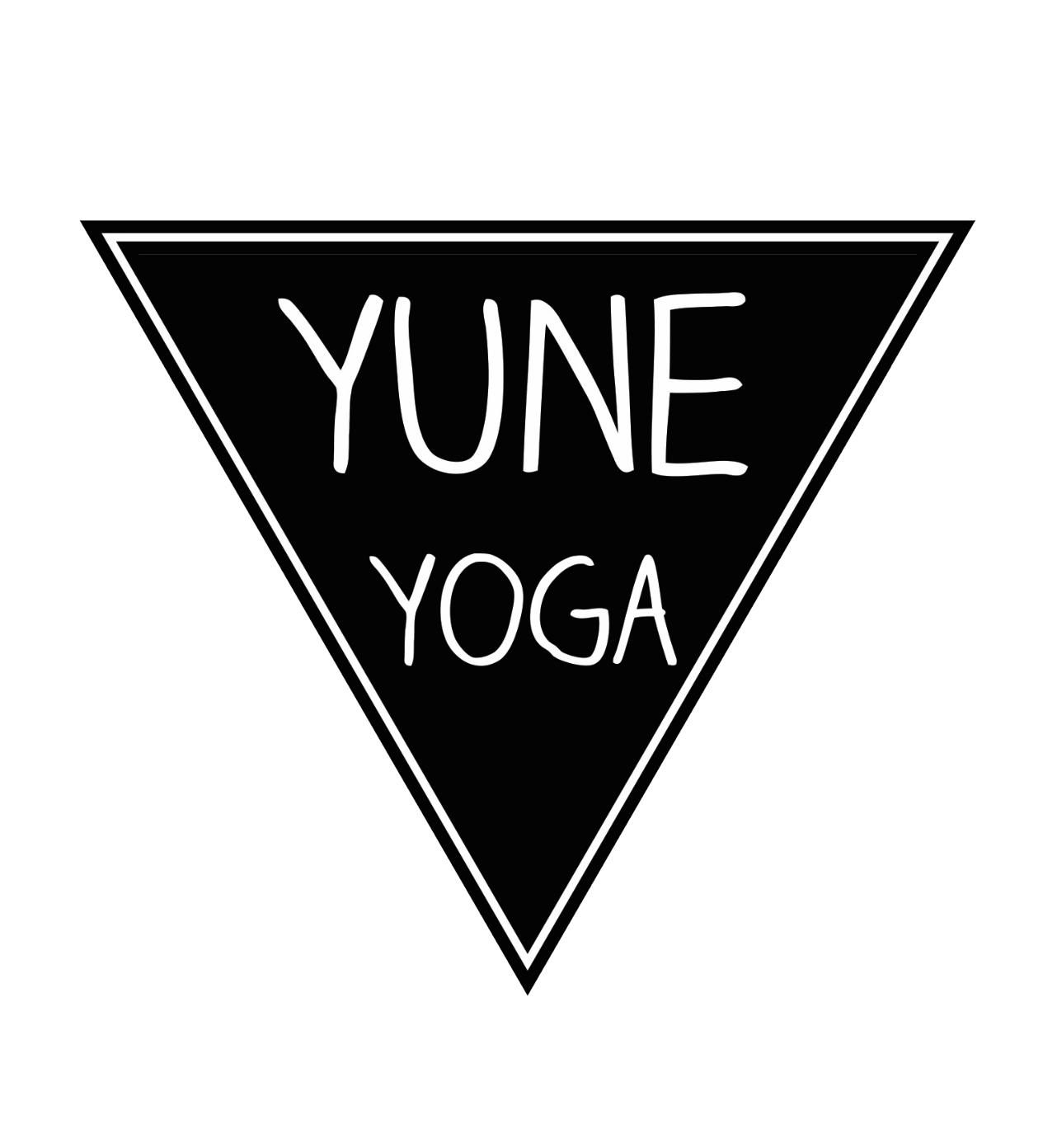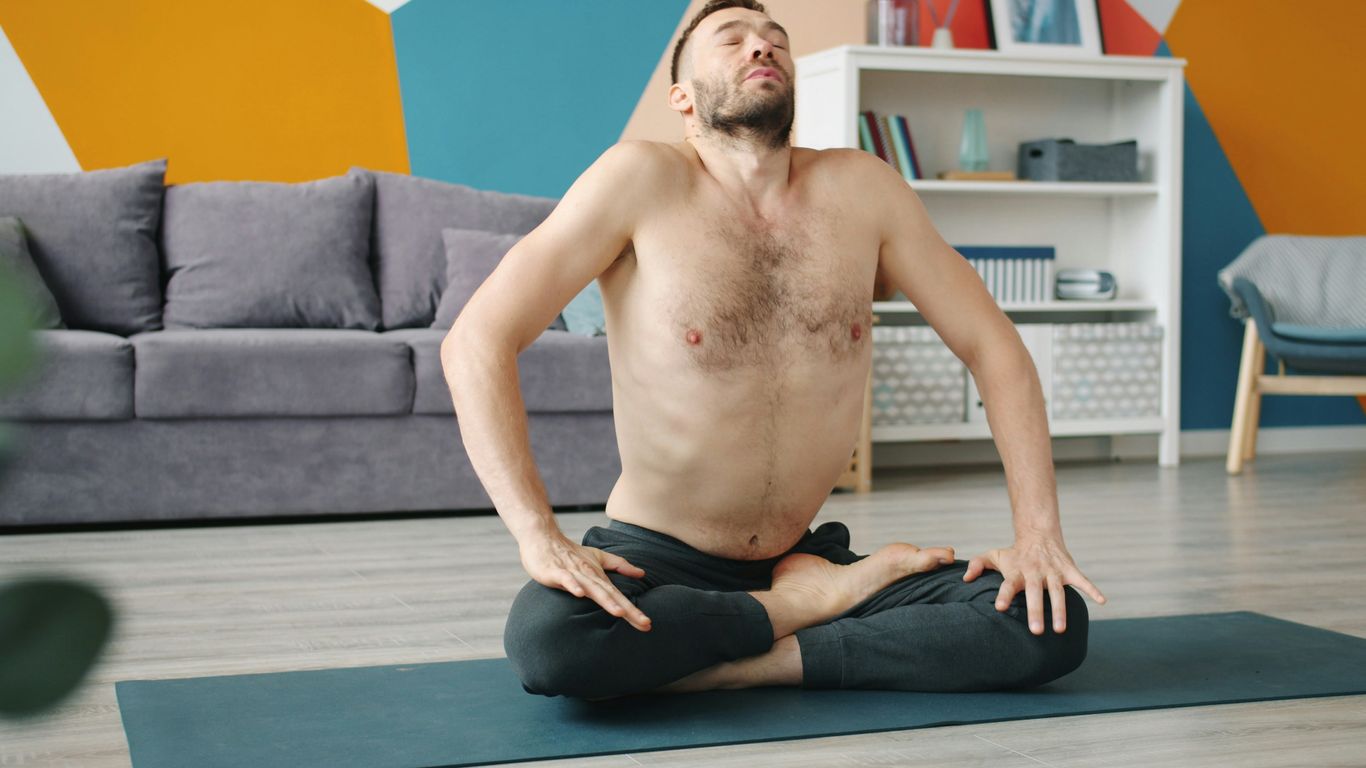
Unlock Deep Relaxation: Effective Yoga Poses for Tension Relief
Feeling all wound up lately? It happens to the best of us. Life throws a lot our way, and sometimes, our bodies just hold onto all that stress. If you're looking for a natural way to unwind and find some calm, yoga might be just the ticket. It's not about being super flexible or doing complicated poses; it's about gentle movement, mindful breathing, and giving yourself a break. This article is all about simple yoga tension relief techniques that can make a real difference in how you feel, both physically and mentally.
Key Takeaways
- Child's Pose offers a gentle way to release tension in the back and shoulders, promoting a sense of calm.
- The Cat-Cow sequence is great for spinal decompression, using rhythmic movement and breath to ease stiffness.
- Forward folds, like Seated and Standing Forward Fold, help lengthen the back body and release stress stored in the hamstrings and spine.
- Reclined twists gently release tension along the spine and can aid in relaxation.
- Techniques like breath control (Pranayama) and Yoga Nidra can significantly deepen relaxation and reduce stress.
Embrace Stillness: Foundational Poses for Yoga Tension Relief
Sometimes, the best way to deal with a tense body and a busy mind is to just… stop. These foundational yoga poses are all about slowing down, breathing, and letting go. They're like a gentle reset button for your whole system, perfect for when you feel overwhelmed or just need a moment of quiet.
Child's Pose: A Gentle Reset
This pose is like a warm hug for your body. It's super simple but does wonders for releasing tension in your back, hips, and even your shoulders. When you settle into Child's Pose, it signals to your nervous system that it's okay to relax. It's a great way to find a little bit of peace when things feel like too much.
To get into it:
- Kneel on your mat with your knees about hip-width apart.
- Lower your torso down between your thighs.
- Extend your arms forward on the mat, or rest them alongside your body.
- Rest your forehead on the mat and just breathe. Let your shoulders soften.
This pose is a natural invitation to slow down. Focus on making your exhales a little longer than your inhales. It helps to calm the chatter in your head.
Corpse Pose: Cultivating Deep Relaxation
Don't let the name fool you; Corpse Pose (Savasana) is anything but lifeless. It's actually the pose where you get to experience the full benefits of your practice. It's all about complete surrender and allowing your body to absorb the good stuff. This is where true rest happens.
Here's how to do it:
- Lie down flat on your back.
- Let your arms rest comfortably by your sides, palms facing up.
- Allow your legs to fall open slightly, feet relaxed.
- Close your eyes and just be. Try to let go of any effort.
Legs-Up-the-Wall Pose: Soothing Tired Limbs
If your legs feel heavy or tired from a long day, this pose is pure bliss. It's a passive inversion that helps to calm your nervous system and give your lower body a break. It's surprisingly effective at draining away fatigue and promoting a sense of ease.
To practice:
- Find a wall and sit with one hip close to it.
- Gently swing your legs up the wall as you lie back on the floor.
- Your back should be flat on the mat, and your arms can rest by your sides or on your belly.
- Stay here for a few minutes, breathing softly. It feels amazing.
Unwinding the Spine: Poses for Spinal Decompression

Our spines go through a lot every day, bearing the weight of our posture and the stresses we carry. Yoga offers some fantastic ways to give your spine a break and encourage it to lengthen and release tension. These poses focus on gentle movement and stretching to help decompress the vertebrae and bring some much-needed relief.
Cat-Cow Sequence: Rhythmic Spinal Release
This dynamic duo is a staple for a reason. Moving between Cat and Cow poses, synchronized with your breath, creates a wave-like motion through your spine. It's like giving your back a gentle massage from the inside out. Start on your hands and knees, ensuring your wrists are under your shoulders and your knees are under your hips. As you inhale, drop your belly, arch your back, and lift your gaze for Cow pose. Then, as you exhale, round your spine towards the ceiling, tuck your chin to your chest, and draw your navel in for Cat pose. Repeat this flow for several rounds, focusing on the sensation of movement along your entire spine.
Seated Forward Fold: Lengthening the Back Body
This pose is all about surrender. Sitting tall with your legs extended, you gently fold forward from your hips. It's not about how far you can reach; it's about allowing gravity to help lengthen the muscles along the back of your body, including your hamstrings and your entire spine. Keep a slight bend in your knees if your hamstrings feel tight. Let your head and neck relax completely. This pose can be incredibly calming and helps to release tension that often accumulates in the lower back and shoulders. It's a great way to quiet the mind after a busy day.
Reclined Twist Pose: Releasing Stored Tension
Twisting poses are brilliant for wringing out tension. In a reclined twist, you lie on your back and gently guide your knees to one side while keeping your shoulders grounded. This creates a gentle rotation through your spine, helping to release tightness and improve mobility. It's a passive stretch that allows your body to let go.
Here’s a simple way to approach it:
- Lie on your back with your knees bent and feet flat on the floor.
- Extend your arms out to the sides in a T-shape.
- Gently let your knees fall to one side, keeping both shoulders pressing towards the mat.
- Turn your head to look in the opposite direction of your knees, if comfortable.
- Hold for several breaths, then switch sides.
This gentle rotation helps to massage the organs and can encourage a sense of release, not just physically, but mentally too. It’s like giving your spine a gentle reset button.
These poses work together to create space and ease along your spinal column, promoting better posture and reducing discomfort. Remember to move with your breath and listen to your body's signals.
Opening the Body: Stretches for Physical Ease
Sometimes, the tension we hold feels like a tight knot, especially in our shoulders, hips, and back. These poses are designed to gently work those areas, helping to loosen things up and bring a sense of physical freedom. It's about creating more space in your body so you can breathe a little easier.
Standing Forward Fold: Releasing Upper Body Stress
This pose is a real game-changer for anyone who spends a lot of time hunched over a desk or phone. By letting your upper body hang heavy, you give your neck, shoulders, and upper back a much-needed break. It's like shaking off the day's worries.
- Start standing with your feet about hip-width apart.
- As you exhale, hinge forward from your hips, letting your torso fold over your legs.
- Keep a slight bend in your knees to protect your hamstrings.
- Let your head and arms hang loosely. You can let your hands rest on the floor, on blocks, or even interlace your fingers behind your back for a deeper shoulder stretch.
This pose helps reverse the effects of gravity on your spine, which can feel really good after a long day of standing or sitting upright. It's a simple way to give your back some relief.
Extended Triangle Pose: Stretching for Flexibility
Extended Triangle Pose is fantastic for opening up the sides of your body and creating length. It's not just about stretching; it also helps with balance and can make you feel more grounded.
- From a standing position, step your feet wide apart, about three to four feet.
- Turn your right foot out 90 degrees and your left foot slightly inward.
- Inhale and reach your arms out to the sides, parallel to the floor.
- As you exhale, hinge at your right hip and lower your right hand towards your shin, ankle, or the floor. Extend your left arm straight up towards the ceiling.
- Keep both legs strong and your chest open. Gaze up towards your top hand if comfortable for your neck.
- Hold for a few breaths, then switch sides.
Bridge Pose: Energizing the Body
Bridge Pose might seem simple, but it's a great way to gently open the chest and front of the body, which can get tight from everyday activities. It's also a mild inversion, which can help boost energy levels and improve circulation.
- Lie on your back with your knees bent and feet flat on the floor, hip-width apart, and close to your glutes.
- Your arms should be alongside your body, palms facing down.
- On an inhale, press into your feet and lift your hips off the floor.
- Keep your thighs parallel and your chest open. You can clasp your hands underneath your body for a deeper stretch in the shoulders.
- Hold for a few breaths, then slowly lower back down on an exhale.
Mindful Movement for Stress Management
Sometimes, just moving your body in a focused way can make a huge difference when you're feeling wound up. It's not just about the stretches, though those are great. It's about how you connect your breath to your movements and how you pay attention to what's happening inside. This section looks at a few ways to use mindful movement, beyond just the basic poses, to really dial down that stress.
The Power of Pranayama
Pranayama, or yogic breathing, is a seriously underrated tool for stress relief. It's basically a way to control your breath, and by doing that, you can actually influence your nervous system. Think of it as a direct line to telling your body to chill out. When we're stressed, our breathing often gets shallow and quick. Pranayama teaches us to breathe deeper and slower, which signals to our brain that it's safe to relax. It's like hitting a reset button for your whole system.
Here are a few simple breathing techniques to try:
- Diaphragmatic Breathing (Belly Breathing): Lie down or sit comfortably. Place one hand on your belly and the other on your chest. As you inhale, try to make your belly rise more than your chest. As you exhale, let your belly fall. This is your body's natural relaxation breath.
- Alternate Nostril Breathing (Nadi Shodhana): Sit comfortably. Close your right nostril with your right thumb and inhale through your left nostril. Close your left nostril with your right ring finger and exhale through your right nostril. Inhale through your right, then close it and exhale through your left. This is one round. It's great for balancing your energy.
- Box Breathing: Inhale for a count of four, hold your breath for a count of four, exhale for a count of four, and hold your breath out for a count of four. Repeat. This is super grounding and helps focus the mind.
Yoga Nidra for Profound Rest
Yoga Nidra, often called "yogic sleep," is a guided meditation practice that can lead to a state of deep relaxation while you're still awake. It's not about falling asleep, though you might feel incredibly sleepy! The goal is to move through different states of awareness, from the physical body to the mind, and to release tension at a really deep level. It's like a systematic way to let go of everything you're holding onto. You typically lie down in Savasana (Corpse Pose) and follow the voice of a guide who leads you through body scans, breath awareness, and visualizations. It's incredibly effective for reducing anxiety and improving sleep quality.
Progressive Muscle Relaxation Integration
This technique is all about tensing and then releasing different muscle groups in your body. It helps you become really aware of the difference between tension and relaxation. You might do this as part of your yoga practice or on its own. Start with your toes, tense them tightly for a few seconds, and then completely release the tension. Notice how that feels. Then move up to your calves, thighs, abdomen, arms, shoulders, and face, tensing and releasing each group. It's a very physical way to shake off stored stress and leave your body feeling much looser and more at ease.
By consciously engaging and then letting go of physical tension, you train your body and mind to recognize and release stress more effectively. It's a practical skill that extends far beyond the yoga mat, helping you find moments of calm even in busy situations.
Keep Practicing for Lasting Calm
So there you have it. A few simple yoga poses that can really help when you're feeling all wound up. Remember, it's not about being perfect or doing a fancy headstand. It's about taking a few minutes for yourself, breathing a little deeper, and letting go of some of that everyday tension. Try to fit these into your week, even if it's just for a few minutes here and there. Your body and mind will thank you for it. Keep moving, keep breathing, and find your calm.
Frequently Asked Questions
What's the best kind of yoga for chilling out?
For really unwinding, try Restorative Yoga or Yin Yoga. Restorative Yoga uses props to help you hold poses longer without effort. Yin Yoga targets deeper tissues for a more profound release. Hatha Yoga is also great, with its slow moves and focus on breathing.
How does yoga help me relax?
Yoga brings your mind, body, and breath together. By doing specific poses, controlling your breathing, and focusing your thoughts, yoga helps your body's natural 'chill out' system kick in. This lowers stress hormones and makes you feel calmer.
Is yoga really good for stress?
Many studies show that yoga is super effective for relieving stress. The mix of moving your body, breathing deeply, and being mindful works together to help you feel less stressed and more balanced overall.
How can I use yoga to get rid of stress?
To beat stress with yoga, try different poses, breathing exercises, and meditation. Doing yoga regularly is key to staying relaxed. It’s a good idea to talk to a yoga teacher to create a plan that works best for you and your stress levels.
Can I do yoga before bed to sleep better?
Yes! Doing yoga before bed can help you relax and sleep more soundly. It eases muscle tension, calms your mind, and encourages deep breaths, all of which help you drift off to sleep more easily and stay asleep longer.
What are some easy poses for beginners to relieve stress?
Great starter poses include Child's Pose for a gentle back stretch, Legs-Up-the-Wall Pose to relax tired legs, and Corpse Pose for deep relaxation. These are simple and very effective for easing tension.

